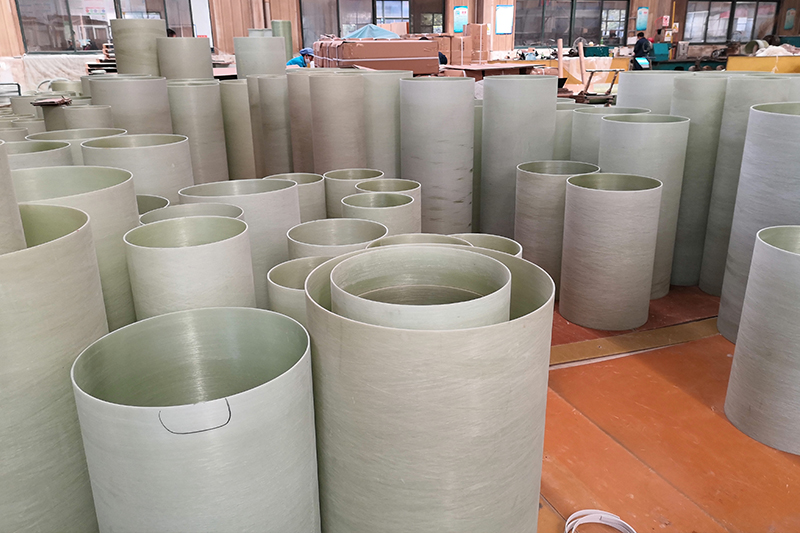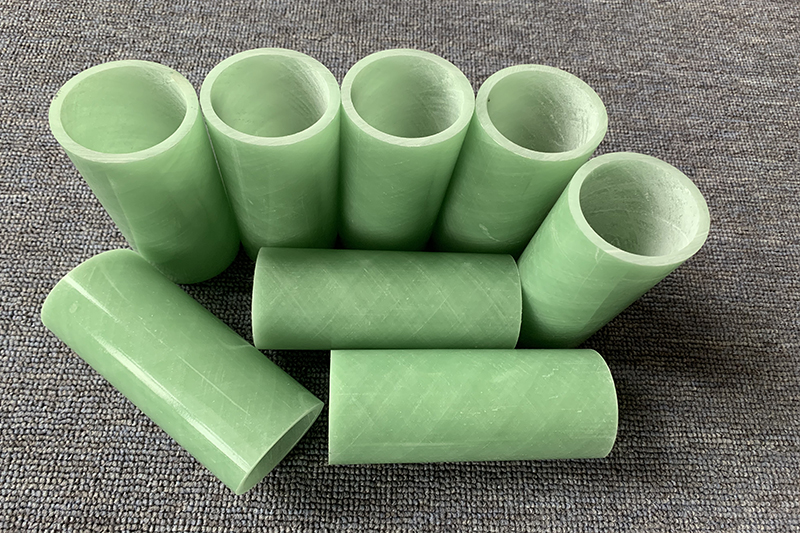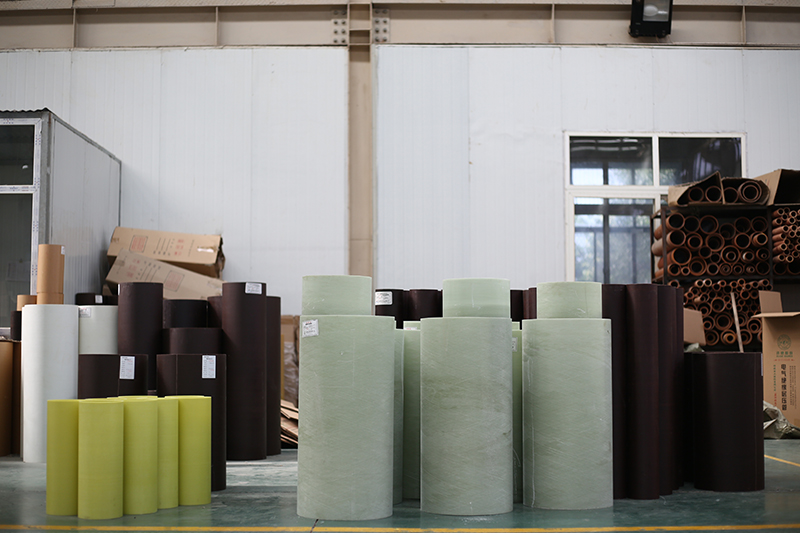As a composite material product that integrates materials science, automated control, and precision manufacturing technologies, epoxy fiberglass winding tube undergoes rigorous process control to ensure strength, corrosion resistance, and durability. Below, we will provide a detailed breakdown of its core production steps.
Raw material selection directly impacts final quality and must be precisely matched to the intended use:
Resin: High-temperature resistant epoxy resin (such as bisphenol A) is preferred. It offers excellent electrical insulation, mechanical strength, and chemical resistance, serving as a core substrate for structural stability.
Glass Fiber: Alkali-free, untwisted glass fiber is used. Its high chemical stability prevents adverse reactions with the resin during curing, ensuring a strong bond between the fiber and the resin.
Curing Agent: Acid anhydrides are typically used. After mixing with the epoxy resin, a chemical reaction promotes cross-linking and curing, forming a strong three-dimensional network structure.
Auxiliary Materials: Quartz sand (for filler properties) and pigments (for appearance adjustments) may be added as needed to optimize performance or meet customized requirements.

The quality of the pipe mold directly impacts the dimensional accuracy and surface quality of the pipe:
✅ Based on the pipe specifications, such as diameter and length, select a metal mold such as stainless steel or aluminum alloy, which offers both strength and corrosion resistance.
✅ Grind and polish the surface to ensure it is smooth, free of burrs and defects. This not only facilitates the epoxy resin’s ability to fully wet the glass fiber, but also reduces demolding resistance and prevents pipe damage.

The winding process determines the structural strength of the pipe, requiring parameter optimization to ensure uniform bonding between the fiber and resin:
After the epoxy resin is evenly stirred, add the curing agent in the correct proportion and mix thoroughly. Strictly control the temperature and viscosity (maintaining within the process requirements) to avoid uneven impregnation due to viscosity variations.
The glass fiber filaments are thoroughly impregnated with resin through an impregnation device. Two common methods are used:
Coating: The resin is applied via a coating roller, resulting in a lower amount of adhesive. It is suitable for weight-sensitive applications;
Immersion: The fiber is completely immersed in the resin tank, resulting in a more complete adhesive layer and enhanced bonding.
Angle: The angle between the glass fiber and the pipe mold axis is controlled by adjusting the winding machine spindle speed and nozzle movement speed—typically 30°-90°, but adjustable to 10°-65° for special needs. This angle directly affects axial and hoop strength.
Method:
Spiral Winding: Fibers are continuously wound in a spiral pattern, forming a composite fiber layer in both axial and circumferential directions, enhancing overall impact resistance and durability.
Hoop Winding: Fibers are wound around the circumference of the tube mold, focusing on enhancing the ability to withstand hoop stress and suitable for high-pressure applications.
Number of Layers: Layers are added incrementally according to the designed wall thickness. Each layer must ensure even fiber distribution to avoid localized accumulation or voids.
After winding, the fiber layer is compacted using a mechanical roller or pressurizing device to remove air bubbles and voids, ensuring a tight bond between the resin and the fiber, improving density and structural stability.

Curing is a critical step in converting the resin from a liquid to a solid state, requiring precise control of temperature and time:
Methods:
Natural Curing: Curing is performed at room temperature and takes a long time (usually several days). It is suitable for small-batch or cost-sensitive production.
Heat Curing: Curing is performed using an oven or heating jacket (typically 60°-120°C, depending on the resin type) to shorten the curing time (from several hours to a day) and improve efficiency.
Parameter control: The temperature and time must match the resin characteristics. Too high or too long may cause resin aging and pipe deformation; too low or too short will result in incomplete curing, affecting strength and corrosion resistance.
After curing, the pipe undergoes multiple processing steps to ensure it meets factory standards:
Demolding: The pipe is removed mechanically or manually to avoid uneven stress that could cause scratches or deformation.
Cutting to length: Cutting to length using specialized equipment as needed ensures a smooth, crack-free cut.
Port polishing: Removes burrs and sharp edges from the port, creating a smooth surface and improving connection seals and compatibility.
Quality testing: Qualification is verified through comprehensive testing, including visual inspection to ensure the absence of defects such as bubbles and cracks; dimensional measurement to ensure compliance with standards for diameter and wall thickness; and performance testing to ensure compliance with water pressure, tensile strength, and corrosion resistance. Only qualified products are released to the market.
Through precise control of these five core steps, epoxy fiberglass winding tube maximizes material performance and is widely used in the chemical, power, and other fields.
If you need our products please write down any questions, we will reply as soon as possible.
There are three ISO certificates for quality certification. The certificates will be shown later. ISO
After receiving the advance payment, the production cycle is 15-25 days. And the transportation cycle should be calcul……
We supply with installation guide and user manual for each transformer. If you do not understand them. We will offer v……